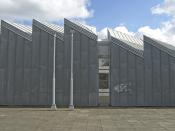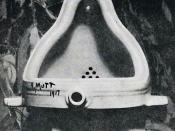As stated by Jonathan M. Woodham, postmodernism "came to be seen as a term which usefully embraced those characteristics - such as eclecticism, ornamentation, kitsch, wit, and irony - which most typified the diversity of contemporary culture in a pluralist society". During the modernist era, designers hoped to reveal the fundamentals of art. Woodham's Twentieth Century Design puts forward that the "modernists saw themselves as the creators of a 'machine age' aesthetic truly redolent of the twentieth century which, freed from the shackles of historicism, explored new forms and materials that were felt to be symbolically, if not actually, compatible with the mass-production capacity of a progressive industrial culture". Conversely, postmodernists embraced diversity and contradiction within art and design, thereby rejecting the rigid genre parameters set by the modernists; favoring eclecticism and drawing upon historical references for inspiration. Through this rejection, characteristics such as Woodham describes are promoted and encouraged.
Postmodernism attacks the perceived elitist approaches of modernism and seeks to establish a greater connection with a wider audience. It has also attempted to create a multiplicity of message and its' medium, as a quintessential subject for design, employing a myriad of materials, typefaces and imagery as focal points. One such designer who has excelled in creating a multiplicity of medium and message is Paula Scher, a graphic designer from Philadelphia whose works are exemplar of the characteristics of postmodernism as outlined by Woodham. In particular, her poster designs for the New York Public Theatre, which not only reflect those postmodern characteristics, but demonstrate a cultural diversity that is specifically postmodern.
Paula Scher's design for the Public Theatre's "Bring In 'Da Noise, Bring In 'Da Funk" poster was highly eclectic, incorporating elements of period-orientated typography and historical designs to make visual analogies which would appeal to contemporary...

![[New York Bank Note Co. notice] (LOC)](https://s.writework.com/uploads/17/171683/new-york-bank-note-co-notice-loc-thumb.jpg)
